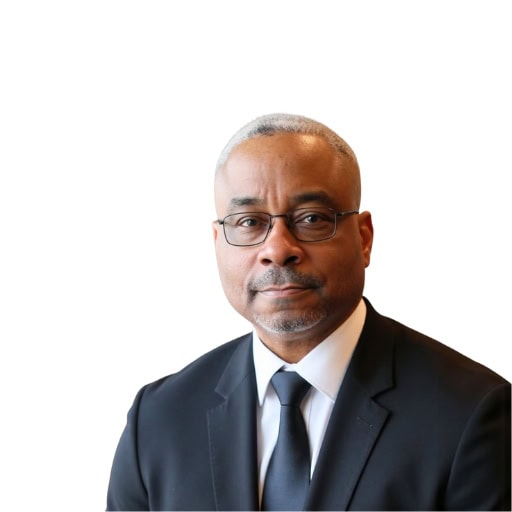We live in times like we are always on the edge of a crisis. Whether it is due to public health issues, geopolitical instability, economic volatility, or an increase in sophisticated cyber threats, uncertainty has become our constant companion.
Effective leadership in this kind of environment is a fundamental shift not just in our leadership paradigm but also to our agility. However, one idea never goes out of style and that is genuine leadership needs to always be people-centered.
People First: The Core of Crisis Leadership
In every decision that we make, people will always be at the center of it. This is not just a “nice-to-have” concept or philosophy, it is the foundation of sustainable leadership. Making sure the people are at the center will ensure that decisions are still humane, values-driven and aligned with our shared humanity.
This people-first mindset becomes unavoidable and crucial during times of crisis. In addition, it grounds organizations in integrity and clarity when the pressure to behave impulsively is at its highest.
“One thing I’ve noticed in encountering every crisis is that people remember how you made them feel much more than the choices you made.”
Practice and Preparation: The Secret Power of Rehearsal
Let’s be clear. When serious problems consistently occur, companies that practice their crisis response do better.
Even occasionally skipping preparation, it ensures a delayed and less efficient reaction. Practice is not optional, it is crucial, and it is confirmed by my experience in the FBI.
In every aspect of decision making, practice is strengthened by them, even if it is impossible to reproduce every real-world factor. It explains:
- Positions and obligations
- Decision Workflows
- When and how to use other resources, such legal advice
If a team practices together, they will develop trust, agility and what I refer to as “new tissue connectivity”, which can only be achieved through shared experience. And if a pressure is built, these exercises foster natural teamwork, allowing leaders to respond confidently rather than confusedly.
Getting Past the “It’s Not Real” Obstacle
Executives are frequently reluctant to allot time for tabletop exercises or simulations and that reluctance may be expensive. To add, the leader’s responsibility is to make the financial case for practice and prove that the benefits of preparation outweigh the time spent.
Having proactive relationship-building is as important for complex occurrences. Know your allies, both internal and external, well in advance of an event.
Moreover, panic can be avoided and crucial minutes can be saved by being clear about who to call and what assistance they can offer.
Leading Through a Heightened Threat Environment
Having worked for the federal government of the United States for 32 years, I can confidently state that the threat landscape of today is unlike anything we’ve seen before.
We are seeing an increase in targeted violence against elected politicians and their families as societal divisions widen. Once settled by discourse, political disputes are now turning violent.
This is not a problem that will go away or will be solved on its own. Leaders in all spheres of politics and organizations need to provide an example of polite conversation and defuse tense situations. Polarization rather than advancement is the outcome of treating policy disputes as zero-sum conflicts.
Being a leader is setting an example of how to manage difficult conversations with tact and decency. A healthy democracy depends on compromise, which is not a sign of weakness.
Handling Media and Misinformation
Division is amplified by our media ecology. Echo chambers and emotional responses are produced when social media algorithms present us with content that confirms our prejudices.
To achieve balance, leaders must consciously consume a variety of centrist sources that offer complete context rather than merely emotional confirmation. This approach encourages deliberate discussion and well-informed decision-making.
Today’s polarization is reminiscent of the volatility of the 1960s. History serves as a reminder that although society can become stronger from such times, if we don’t learn from the past, we will repeat its mistakes. It is the duty of those in leadership roles to put aside their differences.
The Litmus Test: Resilient, People-Centered Decision-Making
No choice will please everyone in a large and complicated society. The final question that leaders should ask is:
“Does this choice benefit the greatest number of people?”
Self-referential behavior is not a sign of true leadership. The results attained for others are more important than the person in charge.
Leaders make more moral, sustainable, and well-respected judgments when they put people first. Thoughtful leaders create safety nets and off-ramps for people who might be negatively impacted, even when difficult decisions must be taken.
At its best, leadership enables individuals to maintain their humanity in the face of disaster.
What Leaders Can Do Now
Here are three quick steps to improve people-first leadership and crisis readiness:
- Practice Regularly: Arrange crisis scenarios at least twice a year. Instead of viewing them as disruptions, view them as strategic investments.
- Communicate with Compassion: In times of uncertainty, be transparent and empathetic when sharing what you know and don’t.
- Model Civil Discourse: Promote frank and impartial communication. Give calm logic more weight than an emotional response.
Final Thought
Our dedication to people must be the greatest constant in these unpredictable times.
Yes, there will be intermittent crises. But how we react with bravery, clarity, and most importantly, compassion is the real test of leadership. How are you training your teams to be leaders in the face of uncertainty?





